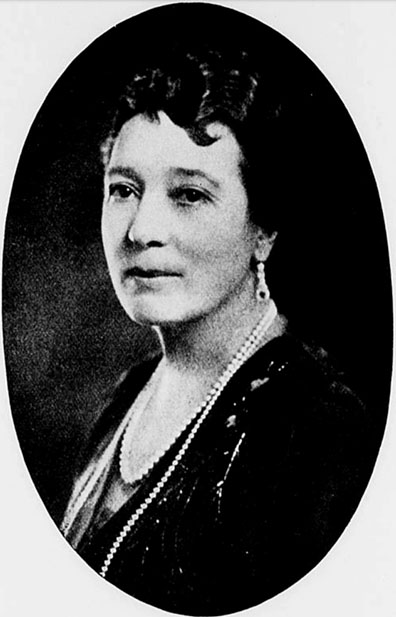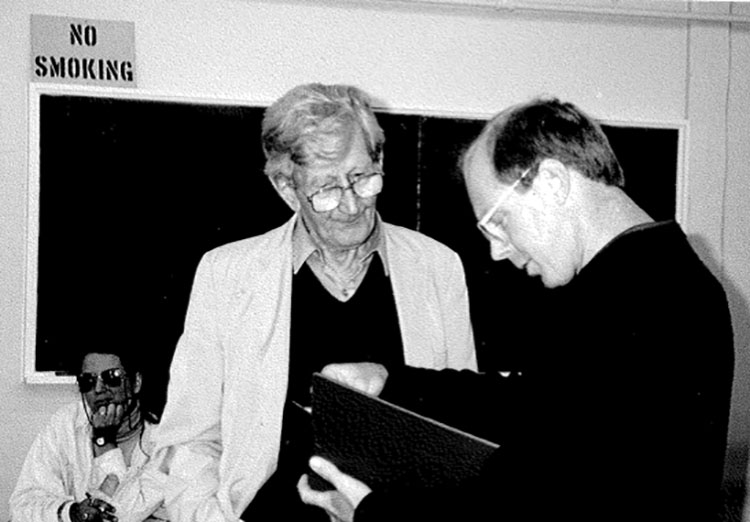Foundations for WAC

Ruth Mary Weeks, NCTE President, in 1930
David R. Russell's history of writing in the academic disciplines (1991, 2002, 2020) recounts ways in which activities we would now view as consistent with the WAC movement have been carried out for more than 150 years, since the beginning of modern higher education after the Civil War.
The impetus can be traced to the shift from a single curriculum where all students took the same courses to curricula where students took specialized subjects and pursued majors in universities. This shift, influenced by the new German model of the university, valued research and the creation of new knowledge as never before. The previous, single-curriculum model emphasized Latin and oratory, spoken rather than written rhetoric, and educated students primarily for the ministry; the new elective curriculum emphasized original research and vernacular written communication, educating a new class of professionals in a wide range of fields. Perhaps more importantly, the new industrial United States, spurred in part by academic research, valued writing in significant ways. This new recognition of the importance of writing led to a shift from a focus on oral rhetoric to a focus on written essays, memoranda, and reports—in every field. English departments were formed to study British (and much later American) literature, courses that focused on oral rhetoric were dropped, often shifting to other departments, and the system of extracurricular literary (really debating) societies evolved into the Greek letter fraternity and sorority system. A new course, Freshman Composition, quickly became ubiquitous—and was assumed to prepare students to write anything in any field.
From the first years of Freshman Composition, in the 1870s, there were complaints that one course was insufficient, that teachers in all disciplines had to help (D. Russell, 1991, 2002, 2020). And there were various attempts to do so, including at Harvard, where Freshman Composition began. But the impetus toward specialization swamped these attempts, as did the overall inertia of the massive growth in higher and, especially, secondary school enrollments.
At the turn of the 19th Century, a group of school reformers became part of the wider Progressive Movement in advocating for progressive education in writing, reading, and speaking (Gradin, 1995). They were inspired by John Dewey's vision of developing students for democratic life through education seen as a social transaction among partners, not simply as a transmission of static information or traditional culture. The goal was to improve both society and its individual members. Although the movement was in many ways co-opted by business interests intent on increasing the utility of future workers, it gave rise to attempts to make education in the disciplines include students' interests and voices, and to educate the whole person, rather than just fill minds with facts. And it was this vision that would later motivate many in the 1970s to pursue WAC (for example, Elaine Maimon praised Dewey as the "presiding ghost" in her early efforts.)

James Britton (center)
Some of these programmatic attempts at collaboration across the curriculum lasted a decade or more. These included various "cooperation" programs in secondary and higher education, where English teachers cooperated with teachers in other disciplines to improve student writing, and the "correlated curriculum" movement in the high schools, which was spearheaded by Ruth Mary Weeks. Weeks (1936), who would become President of NCTE in 1930, argued for the systematic incorporation of English into all subjects, advocating for the use of team-taught interdisciplinary courses, control of curriculum by teachers, and a focus on education for democracy. The correlated curriculum would be, she believed, "an educational home-coming for English," which in previous curricula was "taught in no other way than in relation to the classics, philosophy, and history" (p. 10). But it would also mean "recasting the whole educational program in the mold of a central purpose, so that not only the parts but the whole will have a meaning, a meaning which will tie part to part by a recognizable bond" (p. 10), the bond of a democratic community where all could speak—and write.
In higher education, the backlash against specialization included the General Education movement, or rather movements, because there was little agreement on what should constitute a general education, either in terms of which books should be read by all, or—and more difficult still—what sorts of writing would be necessary. Most universities retain a general education program today, but these programs are typically a menu of courses rather than a focused program. Numerous WAC programs have found important leverage by working with general education programs, whether the general education program takes the form of a small set of courses taken by all students or the more common, much larger set of courses that meet distribution requirements.
The return of veterans at the end of World War II and the GI Bill that followed led to another, even greater surge in U.S. college enrollments. The resulting Communications Movement attempted to teach students to recognize and resist propaganda, and it inspired, in part, the founding of the Conference on College Composition and Communication as a distinct area within NCTE, which added new impetus to efforts to broaden the teaching of writing—and speaking—at the college level. Even so, by the 1960s, English departments in U.S. colleges and universities had become dominated by literary scholarship. Writing instruction, in contrast, was best characterized as prescriptive and largely focused on grammar, mechanics, and style—a pedagogical approach often termed "current-traditional" (Connors, 1981).

Nancy Martin
Two other very different "across the curriculum" efforts that involved writing also gained prominence after WWII: remediation and abolition. Writing centers—originally called "writing hospitals" (Vose, 1925, p. 5)—and remedial courses were places to send students who did not enter the university with the educational preparation needed to write at the required level, or who did not have the resources that would allow them to learn without assistance. For similar reasons, a number of universities and colleges—usually small, private, and selective institutions—abolished required composition courses, typically using the rationale that students should have learned to write before entering college or, if they had not yet done so, that the responsiblity should not fall to the English department, whose job was to teach great literature rather than closely analyze and mediate writing.
But English departments in the 1960s also saw a small but eventually influential revival of interest in classical rhetoric and the teaching of writing, as well as growing interest in language across the curriculum and in students' personal and social development through writing. These developments were profoundly influenced by British scholar James Britton and his collaborators, such as Nancy Martin, many of whom would collaborate with Britton on his influential book, The Development of Writing Abilities, 11–18 (1975). At the groundbreaking 1966 Dartmouth Conference on English, U.S. teachers met teachers from across the Atlantic to respond to the question "What is English?" and to outline ways it might be taught. Scholars who attended the conference had been systematically researching language across the curriculum, not just in terms of disciplinary discourse but also in terms of the individual development of students who came from a variety of ethnic and linguistic backgrounds (see https://dartmouthwritinginstitute.wordpress.com/1966-seminar/a-brief-history/).
In the late 1960s and early 1970s, another surge in college and university enrollment took place, this time spurred by the civil rights movement and a shift to open-enrollment admission polices. The surge brought new populations to higher education, populations with characteristics that differed markedly from those of previous generations of college students. By this time, however, U.S. writing teachers had available concepts and models for thinking about writing development—and for doing something about it—which we now know as writing across the curriculum.
A number of other movements "across the curriculum" emerged either before today's WAC movement (great books, general education, faculty development) or after (diversity, multiculturalism, ethics, internationalization, mathematics, and philosophy as well as reading, literacy, problem-based learning, and communication across the curriculum). But none before or after have had both the longevity and reach of today's encompassing WAC movement (D. Russell, 2020).